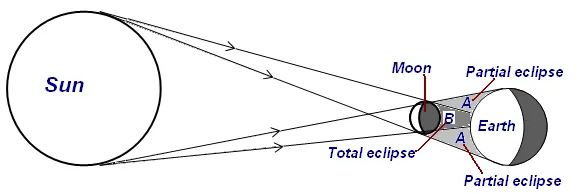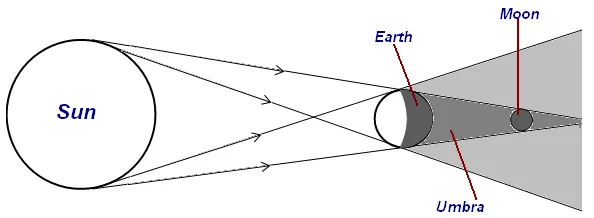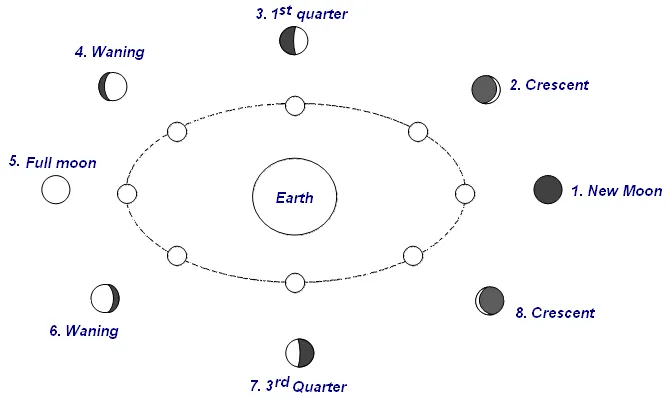Eclipse occurs as the earth and the moon align themselves in positions which cast shadows on each other. For instance this would happen when the sun, the moon and the earth or the sun, the earth and the moon are in a straight line with each other.
Table of Contents
Eclipse of the sun (solar eclipse)
An eclipse of the sun, also known as a solar eclipsehappens when the moon comes between the sun and the earth. In this position, a shadow of the moon is cast on the earth and the sun is hidden from the earth. The figure below shows how the umbra and penumbra are produced. It also shows the appearance of the sun from different positions, A and B on the earth’s surface during a solar eclipse.

In the penumbra, only part of the sun’s face appear to be covered by shadow, whereas in the umbra the face of the sun appears to be completely covered by the moon.
Because the moon goes around the earth every twenty-eight days, we might expect an eclipse of the sun to occur once every month. However solar eclipses occur only very rarely as the orbits of the earth and the moon are not in the same plane and consequently sun, the earth and the moon seldom line up in a straight line. On occasion, when the distance of the moon from the earth is such that the umbra fails to reach the surface of the earth, an annular eclipseof the sun occurs.

Eclipse of the moon (lunar eclipse)
The “lunar eclipse”, occurs when the earth comes between the sun and the moon. In this position no light reaches the moon since it is in the earth’s umbra.

An eclipse of the moon can only occur when the moon is on the opposite side of the earth from the sun. This means that an eclipse of the moon occurs once every month during the full moon.
Phases of the moon
The moon which is the earth’s satellite, takes approximately twenty-eight days (one month) to complete one rotation of its axis as well as to revolve once around the earth. As a result, the moon always faces us with the same side.
Since the moon is non-luminous and it only reflects light coming from the sun, the side of the moon facing the sun will be illuminated while the other side will be in shadow. This is indicated by the inner set of the diagram below.
As the moon continues to rotate on its axis and revolve around the earth, it appears to change in shape. The outer shape of the drawings indicates what these changes look like at different times in the month and why they occur.

These are known as “phases of the moon” and they are result of the moon changing position in relation to both the earth and the sun.